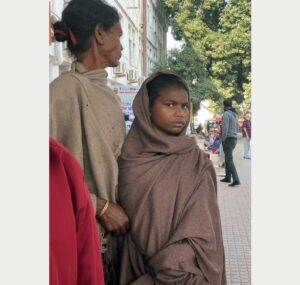

This essay forms a part of my The Idea of India project began in 2009 and completed some three years later. The project was a personal act of dissent against South Asia’s sectarian and nationalist histories, and a search for what Edward Said had referred to as the “…persisting continuities of long traditions, sustained habitations, national languages, and cultural geographies.” This project was a journey to an India of lived experiences and imaginations not bound by sectarianism, and social spaces that pointed to worlds more complex, beautiful and vital than those offered by the threadbare hate mongering of the sectarians. The complete works can be seen online at The Idea of India.
I did not believe until I saw it with my own eyes. On a cold winter’s morning, standing on a hill overlooking the city of Erumeli in Kerala, and looking down at the mosque of Vavar, I finally saw it; hundreds of half-clad, paint smeared, ecstatic Hindu pilgrims dancing, prancing and singing as they circumambulating the outer walls of the large, pink mosque and then making their way to the Petta Sree Dharmasasta mandir across the street. A seemingly endless stream of men poured into the mosque and another, like an umbilical chord, moved between the gates of the mosque and that of the temple, and transformed the two distinctly separate religious spaces into one. What I was seeing was one of the most unique elements of the pilgrimage to the Sabarimala mandir; the act of obeisance and respect, that the Hindu pilgrims must offer to a Muslim saint before…
Related Posts


Donald Trump’s Master Economic Plan I Opinion by Yanis Varoufakis




